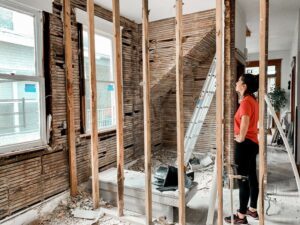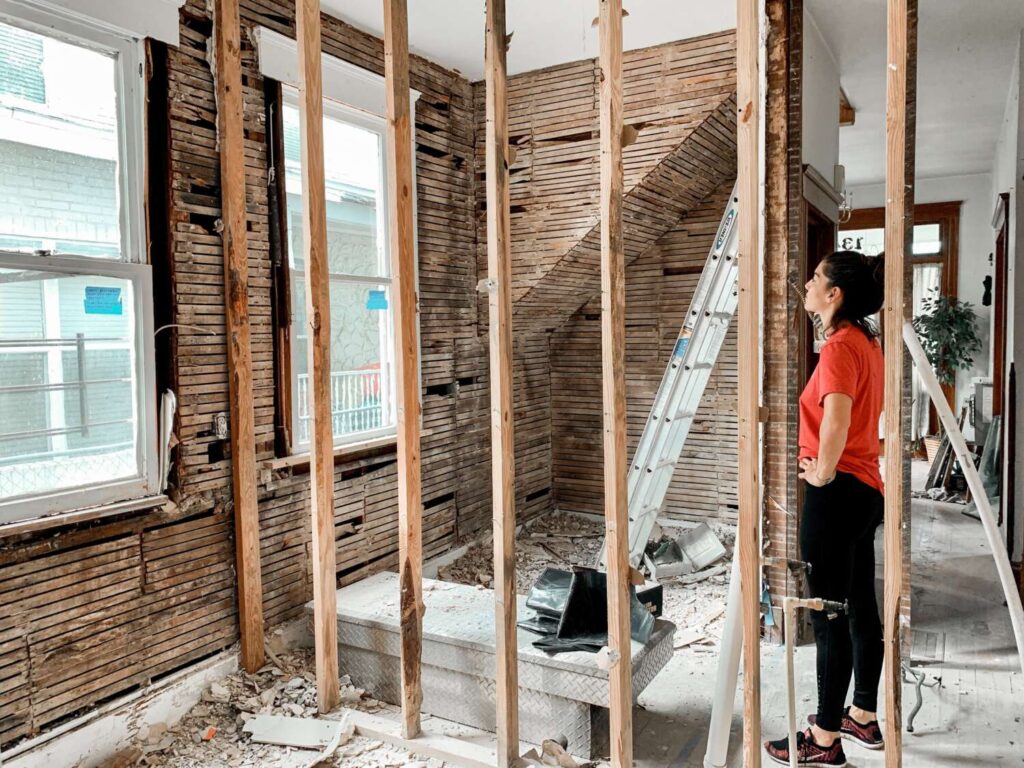If you haven’t recently moved into a brand-new, green-certified home (or aren’t anxiously waiting for the build to be complete), chances are you’re one of the four in 10 Americans living in an older home.
In fact, 40 percent of the United States’ 137 million homes were built before 1969.
Before you begin any renovations to update that kitchen or bring your home up to today’s green standards, it is important to consider potential health issues that are the result of construction practices in days of yore.
According to the Environmental Protection Agency (EPA) and the U.S. Department of Housing and Urban Development, more than 30 million homes have serious healthiness issues related to their design and construction. Additionally, more than 20 million homes test positive for lead.
Before we get to the present, let’s take a look back at what may be lurking in some of these older homes and what you can do about it.

Common culprits
- Arsenic: This toxic substance was commonly used as a fixative for the bold colors, particularly green, in Victorian wallpaper. “Amounts of arsenic that were deadly to children and the elderly were easily metabolized by healthy adults, which is one of the reasons it took many people so long to accept that arsenic wallpaper was bad news,” according to Smithsonian magazine article “Arsenic and Old Tastes.” You’ll want to be extremely careful when dealing with centuries-old renovations of any kind.
- Non-grounded outlets: Those outlets for three-pronged devices weren’t just a “new” thing beginning in the 1960s. The two-pronged outlets lack the safety features designed to protect people from electrocution and fire. In 2002, the American Journal of Public Health stated that housing design and construction materials can directly influence fire risk. You’ll want to budget for new professional wiring at each outlet.
- Clay and cast-iron pipes: These drain slowly, get backed up, are prone to tree-root invasions, and may have blockages or large breaks and cracks. Call a plumber to have these replaced.
- Lead paint: This is a common one. In fact, 69 percent of homes built between 1940 and 1959, and 87 percent built before 1940 are likely to contain lead-based paint, according to the EPA. Even though the phase-out began in the 1950s, homes built between 1960 to 1977 remain 24 percent more likely to contain lead-based paint. Lead paint was finally banned in 1978. You can start with a home test kit, and get professionals to help remove it.
- Asbestos: This was present in a wide range of materials. It was durable and heat resistant, which made it perfect for fireproofing. The bad news? It can show up in insulation, ceiling and floor tiles, shingles and flashing, walls, windows, sheetrock, around boilers and pipes, in siding, and in joint compounds. If it’s intact, it’s no big deal. But airborne fibers can cause cancers and lung disease. Call a professional to mitigate damaged, broken or worn asbestos in your home.
- Galvanized plumbing: This was zinc-coated, which meant it wouldn’t rust. To today’s homeowner, it means corrosion, sediment, low water pressure, and limited plumbing function. Call a plumber and have it replaced.
- Other lead-based materials: Lead can be found in vinyl tiles, blinds, plumbing fixtures, and more. Lead in the water continues to be an issue everywhere, and it’s worth investing in a plumbing lead test.
- Pesticides: In the past, it wasn’t an uncommon practice to spray insecticides at cabinet kick plates in the kitchen and bathroom. Herbicides, rodenticides, and insecticides that are now banned have been stored, sprayed, and spilled in basements, garages, and storage rooms. Look for leftover residues of these poisonous chemicals.
Modern materials
Even with great strides to improve sustainability, advances in building materials and better awareness, there are still some health-centered concerns.
- Brownfield sites: Toxicity or contamination from former industrial or agricultural uses can be common in older buildings. If your home is built on or near a brownfield site, you should probably get it tested.
- Mold: Here in Western North Carolina, our southeast climate is an especially perfect recipe for mold. Uncontrolled mold overgrowth can lead to allergies, asthma, and compromised immune systems. You’ll need to focus on repairing the underlying cause, and not just mitigation, to see long-term improvements in healthiness.
- Radon: The second leading cause of lung cancer, this radioactive gas lies in a swath underneath much of Western North Carolina. Odorless and tasteless, it seeps into cracks in the foundation from the ground. The EPA estimates that 6.8 million homes in the U.S. are above the levels requiring remedial action. Start with a low-cost home kit.
- Super insulated structures: Airtight buildings decrease energy costs but can simultaneously trap moisture and air. Good ventilation practices are a key. ERVs (energy recovery ventilation) balances air exchange.
- VOCs: Many paints, stains and building materials contain these volatile organic compounds. Insist on zero of low-VOC alternatives.
- Electromagnetic radiation: Though earth itself is a gigantic magnetic field, there are increasing concerns about the effect EMR has on cells, health and tissue. The greater the distance between you and an EMR source, like smart meters and electrical panels, the better. Limit the time spent near modems, routers and Wi-Fi connections.
Moving forward
Every age has seen strides forward. Electricity replaced the always-on gas lamps, which basically poisoned us slowly, but the wiring created possible electrocution. Asbestos insulated us from the heat and cold, but later we discovered it caused lung cancer. Lead pipes replaced wood that rotted, but has now resulted in a huge health problem.
Solar, energy efficiency, use of reclaimed or recycled materials, best design practices and thoughtful land management have become great achievements in the 21st Century.
Though there is progress, health-centric understanding of the home still has a long way to go in our understanding of how our home environment shapes our well-being. We must continue to be mindful of how our indoor living spaces impact our health as much as we’re concerned with how buildings impact the planet.
Rick Bayless is a nationally award-winning Environmental Home Healthiness Expert, Board Certified as an Indoor Environmental Consultant, and a Healthy Homes Specialist. Rick and his team offer expert, unbiased evaluations, identification and solutions regarding potential systems problems and wellness issues, including Sick House Syndrome. Connect with Rick at ahealthierhomenc.com.
You can also view this article as it was originally published on page 62 of the 2022-23 edition of the directory.


